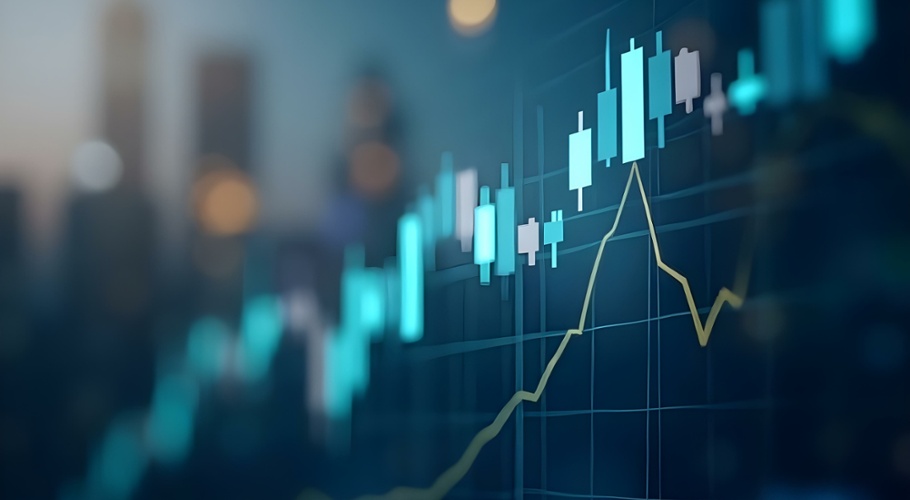How long can electric vehicle transition keep driving ASX Lithium stocks?
Despite an already rapid rise, lithium prices and stock values look set to continue to strengthen in the face of worries about a weaker economic outlook, due largely to the sharp growth expected in electric vehicle demand.
Car maker Volvo’s pledge to stop selling petrol cars in Australia by 2026 and go fully electric has highlighted the massive transformation underway in vehicle electrification and once again put the spotlight on a key component of this shift; lithium.
Lithium battery technology is essential for electric vehicles (EVs) while also playing a key role in other growth markets such as renewable energy storage and batteries for mobile devices.
The strong outlook for these industries has already seen lithium prices hit record levels and caused the share values of its producers to outperform the broader market. This has happened even as tighter monetary policies by world central banks threaten an economic slowdown and China, which dominates the lithium-ion battery market, sees its economy struggle.
Prices on a roll
Lithium prices have surged 123% year-to-date and are as much as 10 times above their historical levels, according to data provider Benchmark Minerals Intelligence[1] .
Despite this surge, there is potential for further gains according to expert analysts.
In early November, Macquarie Bank upgraded its lithium price forecasts to new highs. “Our forecasts expect the (lithium) market to remain in deficit given the limited additional output in the near term,” Macquarie analysts said. “More importantly, we highlight that EV penetration rates are forecast to grow further over the medium term.”
The bank’s analysts upgraded all their Chinese and regional lithium price forecasts and lifted the peak price for spodumene, one of the most important lithium core minerals, by 30% to $US6,500 per tonne.
UBS mining analyst Levi Spry, told the Australian Financial Review in November, “Lithium prices so far [have been] immune to macro weakness. This is despite the obvious headwinds of China, European electric vehicle sales disappointing, and inflationary and monetary policy factors”.[2]
New supply rising slowly
Spot lithium prices had already risen rapidly throughout the second half of 2021 before their ongoing surge to new record highs this year. These very strong gains have given producers every incentive to increase supply, but even so the market is forecast to remain tight well into 2023 as these new projects take time to ramp up. Around 40% of the 2025 supply estimate hasn’t been built or commissioned yet.
While supply is slowly building, demand on the other hand is seen growing very sharply.
According to the International Energy Agency[3] , global EV sales reached a record high in 2021, despite supply chain bottlenecks and the ongoing Covid-19 pandemic. Compared with 2020, sales nearly doubled to 6.6 million (a sales share of nearly 9%), bringing the total number of electric cars on the road to 16.5 million. The sales share of electric cars increased a further 4 percentage points in 2021.
Electric Vehicle popularity accelerating
Acceleration of electric vehicle demand (particularly in China) is now projected to grow by 5 times the current levels by 2030, and by 14 times in the run up to 2040. In the US, demand for electric vehicles is set to gain a further boost as the newly passed “Inflation Reduction Act” extends tax breaks for new electric vehicle purchases.
“I think the policy setting in the US, European Union, Japan as well as China are all biased towards the rapid adoption of EVs,” said Matthew Frydman, Senior Research Analyst at MST Financial.
Frydman believes lithium demand will grow in line with the EV adoption rates leading to a compound annual growth rate of around 30%.
Aussie producers in good shape
Meanwhile, lithium producers are enjoying huge margins on the back of this undersupplied market. Incumbent Australian producers were regarded as having had some of the best, low-risk growth projects in the world, even before the latest surge in lithium prices, and most have built globally competitive lithium businesses which are still trading at a large discount to peers.
Frydman’s pick of the ASX listed lithium producers is Mineral Resources (ASX:MIN). It offers a diversified Australian commodities business with consistent discipline on capital returns. He said the restart of its Wodgina mine and MIN’s unique toll-treating arrangements, is expected to drive record earnings in coming years.
Other major lithium stocks on the ASX include Pilbara Minerals Limited (ASX:PLS), IGO Limited (ASX:IGO), Liontown Resources Limited (ASX:LTR), Core Lithium Ltd (ASX:CXO), Piedmont Lithium Inc. (ASX:PLL), Sayona Mining Limited (ASX:SYA), Ioneer Ltd (ASX:INR), Allkem Limited (ASX:AKE), and Lake Resources NL (ASX:LKE).
Smaller Lithium stocks include Argosy Minerals Limited (ASX:AGY), Vulcan Energy Resources Limited (ASX:VUL), Leo Lithium Limited (ASX:LLL) and Galan Lithium Limited (ASX:GLN).
Among ASX-listed ETFs, investors have the option of the ETFS Battery Tech & Lithium ETF (ASX:ACDC). ACDC invests in companies throughout the lithium cycle, including mining, refinement, and battery production, cutting across the traditional sector and geographic definitions.
Other exchange traded products more loosely associated with lithium are those such as the BetaShares Electric Vehicles and Future Mobility ETF (ASX:DRIV), which is focused on the innovation in automotive technology and features holdings in stocks like Tesla, Volvo and Volkswagen.
Betashares also offer the Energy Transition Metals ETF (ASX:XMET), which offers exposure to global copper, lithium, nickel, cobalt, graphite, manganese, silver, and rare earths producers.
VanEck’s Vectors Global Clean Energy ETF (ASX:CLNE) focuses on the largest companies related to clean energy production and clean energy tech. While Global X Green Metal Miners ETF (ASX:GMTL) gives investors a diversified exposure to global lithium, copper, nickel, REE and cobalt stocks.
Lithium-related stocks and ETFs have been market favourites for the past couple of years and no doubt have priced in much of the strong outlook for the underling commodity.
However, with demand for electric vehicles and other renewable products which utilise lithium batteries on such strong growth trajectories for the foreseeable future, as the transition to net zero gathers pace, the sector still looks to have more potential to benefit from the structural changes taking place in the world’s economy.
[1] Benchmark Minerals Intelligence Lithium Index
https://www.benchmarkminerals.com/
[2] Lithium prices prove ‘immune’ to recession anxiety. AFR, November 9, 2022
https://www.afr.com/markets/commodities/lithium-prices-prove-immune-to-recession-anxiety-20221109-p5bwpi
[3] International Energy Agency Electricity Vehicles Tracking Report, September 2022
https://www.iea.org/reports/electric-vehicles

